Reviews
Gus Van Sant
USA, 2005
Credits
Review by Jonathan Foltz
Posted on 26 August 2013
Source HBO Studios DVD
Categories Favorites: The Apocalypse
There is a disquieting knowledge in the awareness that the world - society, friends, even finally oneself - can be not just destroyed but also patently refused. The world does not need us, nor we it, and to feel the availability of this indifference is to discover life’s lack of necessity, its openness to disaster. It is the genius of rock music to harness the energy of this corrosive thought in anthems of defiant individualism, channeling the harm of social repudiation into attitudes of damaged cool. These are safe, avowable forms of discontent. In Last Days, Gus Van Sant’s 2005 fictionalized elegy to Kurt Cobain’s death, he turns our attention to the more irrecoverable drama of personal apocalypse, of a life so encircled by the rhythms of afflicted consciousness that death has come to seem instinctual, compulsive, and inevitable. Van Sant doesn’t give us context for understanding the suicide of Blake, the Cobain surrogate played by Michael Pitt—no personal history or psychological detail to rationalize his death. Drug use in the film is implied, but never shown. Instead, we are given the spectacle of Blake’s haunted final days, without comment: extended tracking shots of Blake’s hunched shoulders, inarticulately stalking through the wilderness outside his New York retreat, images of him doubled over, struggling to remain standing, or fighting a handful of mumbled sentences through the thickets of bleached hair draped over his face. We are forced, in other words, to contemplate his actions in their inaccessible and inconsolable extremity, as the mute agonized choreography of social and personal abandonment. In this way, Van Sant stretches dramatic identification to an astounding thinness, patiently finding eloquence and room for compassion even for a character who has turned his back on our ability to understand him.
There is no way to view Last Days without reflecting on the cultural glut that surrounded Kurt Cobain’s death. Does the film trade on the iconography of his suicide? Does it poach, unethically, on the impersonal mythology of Cobain’s status as a rock outcast drowned by the sorrows of fame? I don’t know if these are interesting questions. Still, there’s no denying that the presence of Cobain’s biography in the film is at once deliberate and thorny, and that it has important implications for the film’s formal strategies. The end credits announce - with a measured balance of legal caution, reverence, and artistic ambivalence - that “although this film is inspired in part by the last days of Kurt Cobain, the film is a work of fiction and the characters and events portrayed in the film are also fictional.” The similarities to Cobain in the film are overt: from Michael Pitt’s bleached hair to his striped sweaters and ironically goofy sunglasses, Van Sant hues to the contours of Cobain’s image with measured exactness.1 But this proximity to a known history also allows Van Sant to forgo classical exposition, leaving large and important pockets of the film’s events unexplained. The film’s reliance on the presumed familiarity of Cobain’s image, and the tragic knowledge that this image never ceases to evoke, thus encourages greater forms of experiment, creating a final product far more startling in its psychological darkness, its narrative contortions and obliqueness of vision than either Gerry or Elephant—the two preceding films in Van Sant’s so-called “death trilogy.”
It is as though Van Sant could not evoke Cobain’s image without also seeking formally to erase it. The Blake of Last Days is at once unmistakably Cobain and a person without history, so crushed under the weight of inexplicable compulsion and desperate lassitude that he seems less an individual than a feral, mumbling creature, lumbering from one oblivion to another. But although Blake serves as the film’s mute gravitational core, Van Sant surrounds him with a worried but inattentive satellite coterie: hanger’s-on and bandmates, a magician-obsessed private detective (played by Ricky Jay), a concerned music industry friend (played by Kim Gordon), a shabby scenester (played by Harmony Korine) who wants to give Blake part of a snake’s jaw which he claims has voodoo powers. The cameo quality of these associations is important: there are no central dramatic relationships in the film, only casual or partial contacts that Blake can barely tolerate and eventually flees. Blake wants nothing from these encounters except to be left alone, and every long-shot in the film that follows him walking slowly from behind, composed with Bela Tarr-esque restraint, becomes a document of him walking away from a life that has ceased to hold any interest.
Van Sant emphasizes Blake’s solitude by making the characters in the film with whom he shares the most screen-time also his most inconsequential contacts. In one early scene, a yellow-pages representative stops by to discuss an ad that Blake apparently placed for a non-existent business, as a benumbed and disconsolate Blake, clad in a ripped black dress, hangs his head in silence; random Mormon teenagers stop by attempt to evangelize, while Blake ducks out to the greenhouse to avoid running into them; even the partner-swapping group of friends staying in his house seem to treat him as a foreign presence. When Asia, one of the women in the group, discover Blake collapsed in a stupor, she picks him up off the floor but leaves him there without comment. His other friends only interact with him when they want something, to play a tour that will make them rich, or to listen to a demo of their song and help them with the bridge. In one wonderful scene - during which Blake stands in the other room making the most abject bowl of macaroni and cheese imaginable while his friends begin a distracted and hazy orgy set to “Venus in Furs” - his friend wanders into the kitchen mid-reverie to ask for a plane ticket and complain that there are no apples and that the house isn’t warmer. “I need to get to Utah and we need a jet heater,” he laments in the clearest statement of how much Blake’s friendship means. When, at the end of the film, the toadying foursome discover on the news that Blake has killed himself, they pile in the car, without a pause of grief or remorse, to flee the scene lest they are implicated in his demise. It is not as though no one cares for Blake: we know that a Courtney Love-esque love interest, absent in the film and only referred to as “her” or “herself,” has hired a private detective to find out where he is. It is simply that Blake has insulated himself from all but the most dispensable attachments. He remains immune from his encounters the way a saint resists the temptations of the devil, through a dark asceticism of slurred indifference.
If Van Sant doesn’t quite glorify or romanticize Blake’s refusal of the world, he certainly encourages us to respect it. Much of the film’s formal strategy seems designed to provide a visual approximation of Blake’s agonized and occasionally Christ-like withdrawal. In one scene, as we witness Blake collapsing down a hill while carrying a shovel, trance-like, Van Sant mingles the sounds of church bells with the scene’s ambient noise. In another, as the Mormon twins explain the value of religious humility and supplication, we witness Blake in another room, unable to stay standing collapsing on his knees in a posture of numbed excess. A music video is on in the background: Boyz II Men’s 1994 single, “On Bended Knee”—an image that also recurs in “Venus in Furs.” It is as though Van Sant is taunting us, or Blake, or both, with the vague atmosphere of inverted piety where Blake’s vacant debauchery can double for a negative theology. “By sacrificing something innocent, you become innocent yourself,” one of the LDS boys nervously states. When Van Sant shows us Blake’s corpse lying inside the greenhouse at the end of the film, we also see the superimposed image of a naked Blake rise, beatifically from the ground like an angelic spirit finally free from its tormenting world.
Cumbersome symbolism aside, Last Days is at its strongest when it embraces the remoteness of Blake’s character imagistically, without trying to interpret it. The film’s opening sequence finds the disheveled rocker wandering through the woods in a tattered shirt, murmuring to himself in a running commentary we never fully hear with clarity. He slips dangerously down an embankment and impulsively strips off his clothing before diving into a stream. In these scenes, Blake is not a character with whom we might identify, but an animal whose behavior we are observing as we would a woodland creature, from a distance and without comment lest we disturb him. In the next scene, we see Blake later that night around a campfire, warming himself. He breaks erratically into song, yelping out the words to “Home on the Range,” his lonesome but compulsive cowboy’s lament in the manic wilderness of his own making. In fact, the film treats all Blake’s musical performances in the film with a similar sense of animal caution, as though they were not so much songs as animal calls, bodily emissions from a forlorn creature. In one scene, we watch Blake endure a one-sided conversation with Lucas. When his friend eventually leaves him to be at peace - still in the same static take that frames him from a distance across the threshold of the door - Blake shuffles about in his chair before picking up the guitar: comfortable now of being alone, he strums out a Nirvana-esque song with his head bowed to the ground. His music has no audience (except that of the film), it is a release, a lyric radiation. In another scene, Van Sant places the camera outside the window of the house, watching Blake within through the windows of the music room. Obscured by the glass’s reflected light, Blake moves from instrument to instrument looping short incantatory blasts of music through his effects pedals while the camera slowly and deliberately dollies away from the house. This single take, so representative of the film’s stylistic approach, brings us closer to Blake’s condition by attending to the gulfs of understanding that remove him from the world. In this way, Last Days expresses a fundamental compassion for Blake’s sickened apathy, imposing obstacles to our vision in a formal gesture of respectful withdrawal.
Van Sant never leaves the film’s ending in doubt. Last Days is a film about making peace with the fact of inescapable death. In one of the film’s opening scenes, as Blake fixes a savage bowl of coco rice crispies in his paint-chipped kitchen of paradisical neglect, we seem him pull a post-it note from the wall which tells him that the shotgun is in the bedroom closet. “Thanks,” he says before placing back on the wall. Blake’s death is a foregone conclusion in the film, as though he were simply following a script that had been arranged for him. Because Cobain’s biography demands it, because the religious symbolism of the film suggests it, because his friends expect it, and finally because the film’s title announces it—Last Days is full of reminders of this prophetic fatalism. It is a film of beautiful and untragic acceptance, showing Van Sant’s strength as a filmmaker not to abandon even those characters abandoned by the world, and to embrace their disavowal. It may not be a film about the apocalypse, per se, but it functions as an elegiac testament to a way of seeing the world that is consistent with catastrophe. In its quiet abeyance of attention, the film does not moralize about the nihilism Blake’s death, nor does it seem gruesomely to revel in his troubled psychology. Blake’s death is never shown onscreen, in fact. But in its sympathetic attitude of discreet observation Last Days invites us to understand the visceral perplexity of what it might mean to be ready for the end.
- These decisions do not seem to have been his initial intention. According to interviews, the first version of this long-gestating project was to have starred a Danish teenager, who would have remained mute the entire film. Even when Michael Pitt was brought on board, Van Sant initially planned to keep his hair short, for fear that an inadequate imitation of Cobain’s persona would distract from the film’s intentions. ↩
More Favorites: The Apocalypse
-
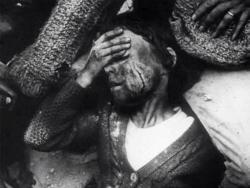
The War Game
1965 -
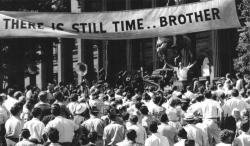
On The Beach
1959 -
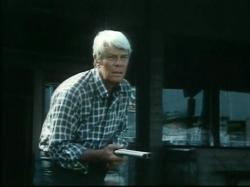
Where Have All the People Gone
1974 -
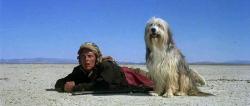
A Boy and His Dog
1975 -
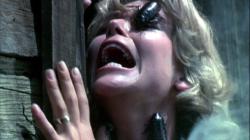
Bug
1975 -
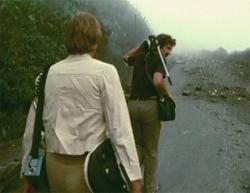
La Soufrière
1977 -
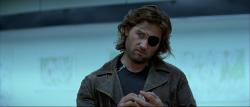
Escape from New York
1981 -

The Road Warrior
1981 -
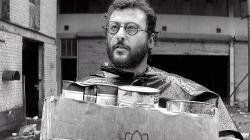
Le Dernier Combat
1983 -
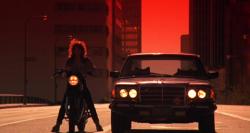
Night of the Comet
1984 -

Threads
1984 -
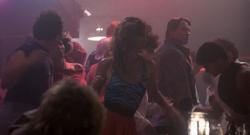
The Terminator
1984 -
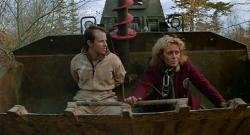
Def-Con 4
1984 -
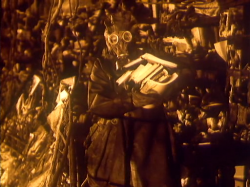
Letters From a Dead Man
1986 -
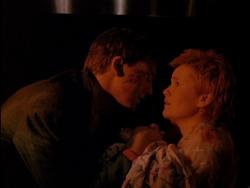
Miracle Mile
1988 -
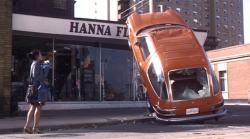
Last Night
1988 -

Last Days
2005 -
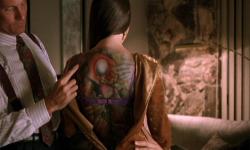
The Rapture
1991 -

Southland Tales
2006 -
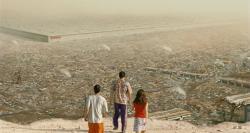
Idiocracy
2006 -
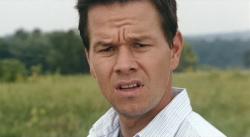
The Happening
2008 -
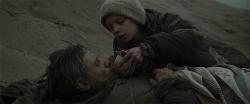
The Road
2009 -
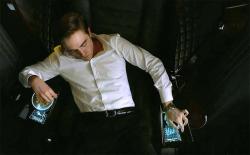
Cosmopolis
2012
We don’t do comments anymore, but you may contact us here or find us on Twitter or Facebook.



